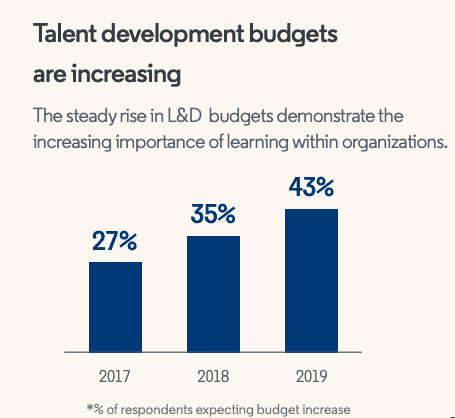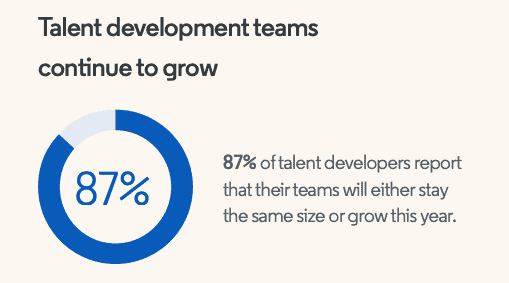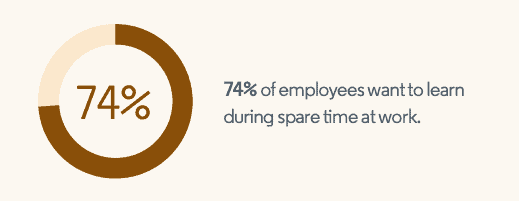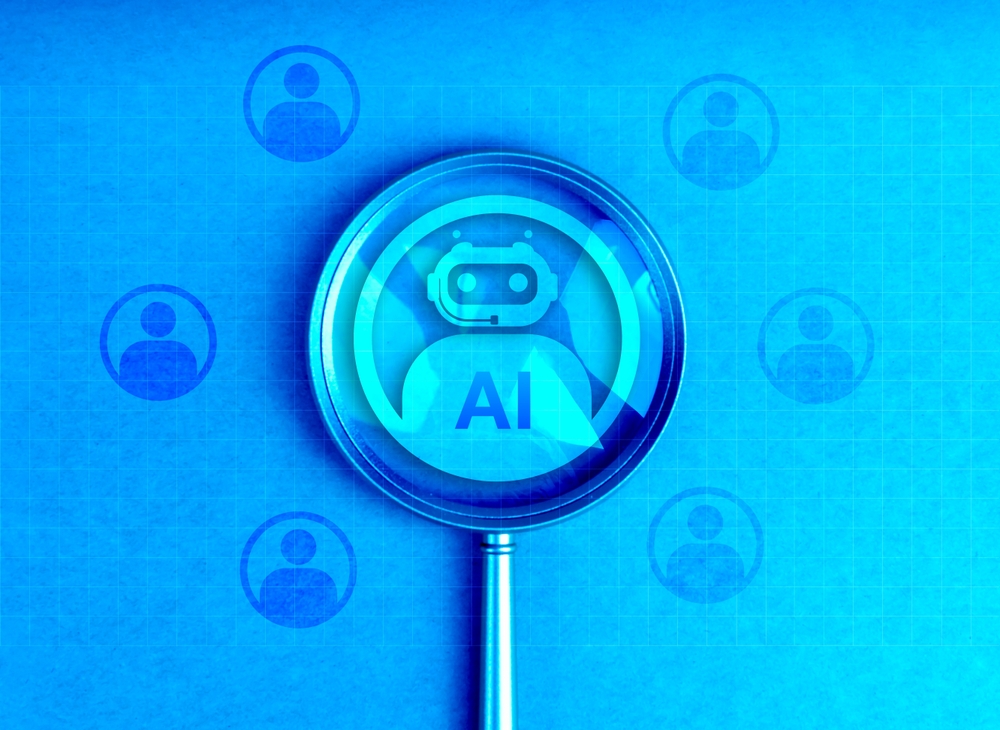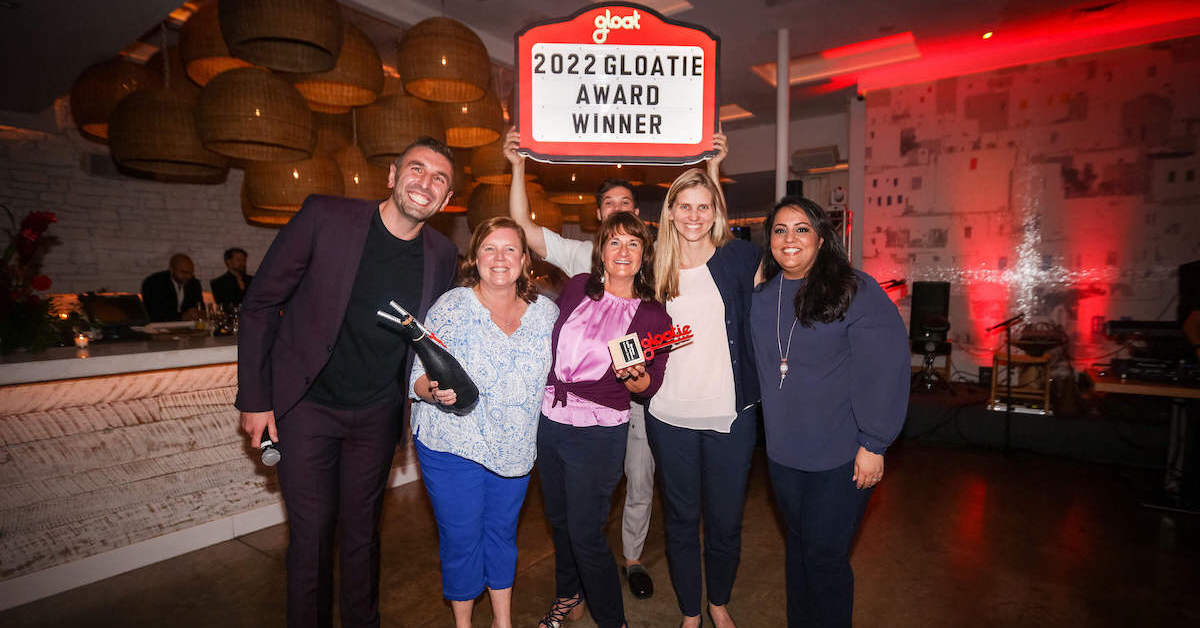What we can learn from LinkedIn’s 2019 workplace learning report
The rise and responsibility of talent development in the new labor market is well underway

LinkedIn surveyed over 3,300 targeted professionals across the world to gain a comprehensive understanding of the state of workplace learning and where it’s headed. “Executives are increasingly looking to talent developers to support the business in strategic workforce planning, including attracting and retaining talent, and ensuring their people have the right skills for today and tomorrow,” LinkedIn’s 2019 Workplace Learning Report reads.
1. Increased budgets and an emphasis on closing the skills gap
In this same study in 2017, budget constraints were the number one challenge reported by learning and development professionals. In 2019, only 27% of talent developers listed budget limitations as a roadblock. Needless to say, the industry has come a long way and talent development is largely recognized for its vital strategic importance.
The report found that the majority of talent developers say they’re focused on proactive efforts like understanding skills gaps and marketing learning and development programs to people. Those who are already in the game, understand they’re involved in something big.
“Companies spend a lot of time and money on retention programs, but they’re missing a key reason why employees pursue new opportunities: they’re bored at work. The majority of those bored employees indicate that the opportunity to learn new skills at their jobs would increase their interest and engagement. Companies should take these numbers very seriously, as they end up eating into their bottom line,” says Darren Shimkus, vice president and general manager for Udemy for Business.
The fact that 43% of talent developers expect a budget increase in 2019 certainly speaks to this. Executive support and the monetary investment that comes along with it is helping employee engagement and learning initiatives remain high on companies’ strategic agendas.
Connecting talent to internal mobility opportunities both through the traditional vertical progression and horizontal growth through participation in new cross-functional projects is key to employee satisfaction, retention, productivity – and actively closing skills gaps.
The shelf-life of skills is shrinking, fueling the fight to close the skills gap in organizations across industries. “This year, the number one focus for talent developers is to identify, assess, and close skills gaps,” the report writes. Efforts to identify and measure skills gaps is up 32% since last year, with employee engagement through learning programs and developing career development programs following close behind.
2. Employee engagement must be led by marketers
The LinkedIn’s 2019 Workplace Learning Report says learning and development professionals must think like marketers as marketing communications are key to reaching employees meaningfully. Email marketing and the utilization of internal employee communication tools like Slack and Yammer are reportedly working, while “messages about learning from managers and leadership don’t reach the majority of learners yet, but they have the potential to have the biggest impact.”
A multi-channel approach is the best way to go in engaging employees and getting their critical buy-in to learning and development programs, this includes email, videos, contests, events, influencer campaigns, and more.
Mobile learning is also on the rise, up by 5% from last year, placing even more of an emphasis on the importance of mobile marketing professionals in understanding lasting engagement practices in the world of mobile and beyond.
Taking it a step further, learning and development teams need experienced marketing communications professionals on their team to create the level of organizational change to which they aspire. True talent mobility and the future of work mean part-time project and cross functional teams in the workplace so having marketing professionals deeply invested in employee engagement and talent development is naturally becoming a must.
3. The hard and soft skills companies want most in 2019
Soft skills:
- Creativity
- Persuasion
- Analytical reasoning
- Collaboration
- Flexible approach (Adaptability)
Hard skills:
- Cloud computing
- Artificial intelligence
- Analytical reasoning
- People management
- UX design
- Mobile application
- Video production
- Sales leadership
- Translation
- Audio production
- Natural language processing
4. Millennials and Gen Zers want to be empowered to make their own career decisions
Millennials are already the largest generation in the workforce and while Gen Zers are just starting to enter the workforce, they are the future. “These professionals want more collaborative work environments and self-directed career paths,” the report reads.
These young professionals crave professional development in the workplace, that is no surprise. A recent report revealed that 75% of Gen Zers are interested in holding multiple roles within an organization, suggesting that employers who offer horizontal growth in addition to traditional vertical growth strategies are in a position to enjoy the benefits of this upcoming generation.
Therefore companies should meet them where they already are – online. Millennials and Gen Zers don’t fear technology like some of their older colleagues, they see technology as a good thing. A recent study shows that 91% of Gen Zers would be more interested in working at a technologically sophisticated company. Instead of making career decisions for them, they want to be the ones who control their own destiny so why not use technology to empower them by providing highly personalized career opportunities from which they can choose and build their own paths.
It’s not just companies that have a vested interest in developing their workforce, but also the employees themselves, especially young ones. “Younger employees are also hungry for growth in the form of promotions and raises. As a manager, I’m seeing quicker asks for raises and promotions, but I’m also seeing a hunger for new opportunities to grow and develop new skill sets. Members of this generation are figuring out how they want to grow professionally and trying to find a way to do that within company boundaries,” Lauren Elmore in Forbes.
92 % of HR respondents expect AI solutions to deliver a better match between skills and jobs, and 87% see AI providing employees with increased visibility of opportunities, according to a recent IBM-led study.
The takeaway points from LinkedIn’s 2019 Workplace Learning Report are extremely valuable in shedding light on hugely significant trends in today’s workplace in regards to talent development, mobility, and agility in addition to overall business strategy. Companies should be investing in their people.
Organizations are up against a competitive talent market dominated by ambitious millennials with Generation Z right on deck. Employers need to fully embrace the significant change in mindset needed to truly harness the power of an engagement and satisfied workforce. That change in mindset is truly empowering employees to own their own careers. There are tons of innovative HR initiatives out there, but most focus on the HR professionals or executives and don’t fully appreciate the benefits that can be gained from truly empowering the employees themselves.
InnerMobility by Gloat is an AI-powered internal talent marketplace connecting employees with personalized career development opportunities. It empowers employees to take control of their own careers and find their maximum productivity bliss within their current company.


